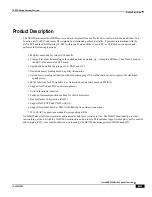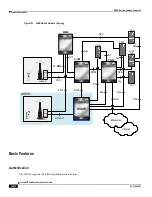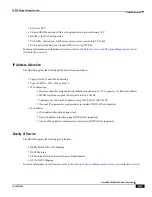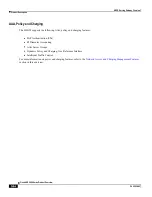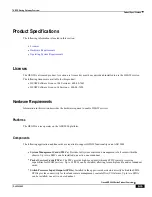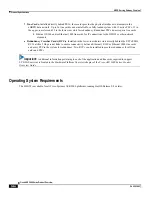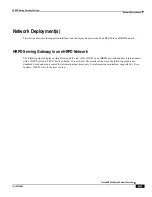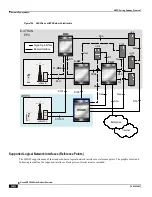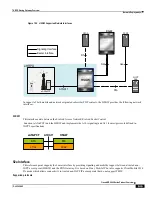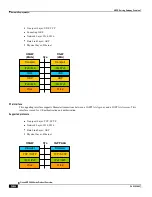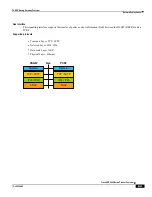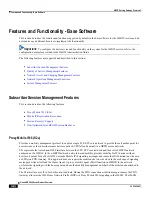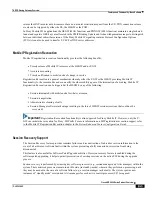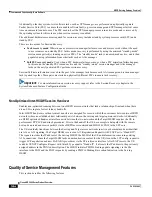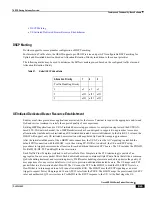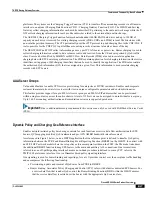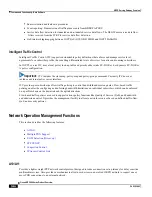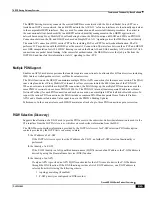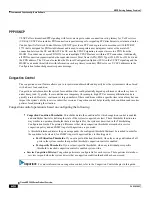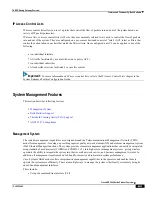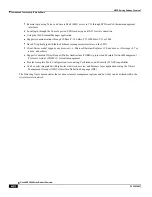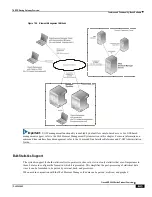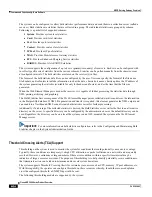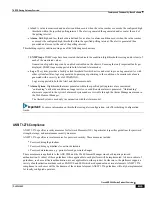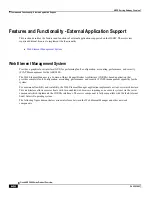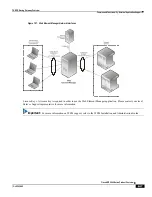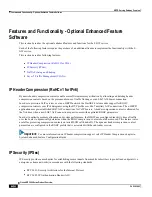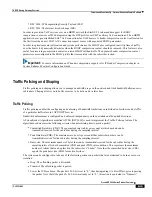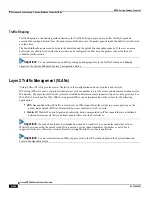
HRPD Serving Gateway Overview
Features and Functionality - Base Software ▀
Cisco ASR 5000 Series Product Overview ▄
OL-22938-02
UE Initiated Dedicated Bearer Resource Establishment
DSCP Marking
Provides support for more granular configuration of DSCP marking.
For Interactive Traffic class, the HSGW supports per-HSGW service and per-APN configurable DSCP marking for
Uplink and Downlink direction based on Allocation/Retention Priority in addition to the current priorities.
The following matrix may be used to determine the Diffserv markings used based on the configured traffic class and
Allocation/Retention Priority:
Table 57.
Default DSCP Value Matrix
Allocation Priority
1
2
3
Traffic Handling Priority
1
ef
ef
ef
2
af21
af21
af21
3
af21
af21
af21
UE Initiated Dedicated Bearer Resource Establishment
Enables a real-time procedure as applications are started, for the Access Terminal to request the appropriate end-to-end
QoS and service treatment to satisfy the expected quality of user experience.
Existing HRPD applications use UE/AT initiated bearer setup procedures. As a migration step toward the EUTRAN-
based LTE-SAE network model, the e-HRPD architecture has been designed to support two approaches to resource
allocation that include network initiated and UE initiated dedicated bearer establishment. In the StarOS 9.0 release, the
HSGW will support only UE initiated bearer creation with negotiated QoS and flow mapping procedures.
After the initial establishment of the e-HRPD radio connection, the UE/AT uses the A11' signaling to establish the
default PDN connection with the HSGW. As in the existing EV-DO Rev A network, the UE uses RSVP setup
procedures to trigger bearer resource allocation for each additional dedicated EPC bearer. The UE includes the PDN-ID,
ProfileID, UL/DL TFT, and ReqID in the reservation.
Each Traffic Flow Template (referred to as Service Data Flow Template in the LTE terminology) consists of an
aggregate of one or more packet filters. Each dedicated bearer can contain multiple IP data flows that utilize a common
QoS scheduling treatment and reservation priority. If different scheduling classes are needed to optimize the quality of
user experience for any service data flows, it is best to provision additional dedicated bearers. The UE maps each TFT
packet filter to a Reservation Label/FlowID. The UE sends the TFT to the HSGW to bind the DL SDF IP flows to a
FlowID that is in turn mapped to an A10 tunnel toward the RAN. The HSGW uses the RSVP signaling as an event
trigger to request Policy Charging and Control (PCC) rules from the PCRF. The HSGW maps the provisioned QoS PCC
rules and authorized QCI service class to ProfileID's in the RSVP response to the UE. At the final stage the UE
Summary of Contents for ASR 5000 Series
Page 1: ......
Page 26: ......
Page 48: ...New In Release 10 0 SCM Features Cisco ASR 5000 Series Product Overview OL 22938 02 ...
Page 50: ......
Page 58: ......
Page 68: ......
Page 126: ......
Page 138: ......
Page 146: ......
Page 218: ......
Page 236: ......
Page 356: ......
Page 374: ......
Page 422: ......
Page 496: ......
Page 572: ......
Page 654: ......
Page 700: ......
Page 726: ......
Page 784: ......
Page 816: ......
Page 844: ......
Page 906: ......
Page 926: ......
Page 942: ......
Page 943: ...Cisco ASR 5000 Series Product Overview OL 22938 02 Chapter 30 Technical Specifications ...
Page 966: ......
Page 972: ......

